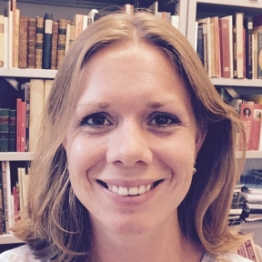Dates: 13 April, 14 April & 19 April or 21 April (third session in two groups)
Like Instagram today, printmaking caused a revolutionary increase in the number of images in the early modern period. And as today, new image-making technology was appreciated but also debated, as well as the cause of legal conflict.
Printmaking was a revolutionary new image-making technology not necessarily because machines took over a large part of the making process, but because large numbers of more-or-less uniform products were sold at spectacular low prices and easily transported all over Europe. This resulted in a new status of printmaking: of the people involved, the making process, and the products (prints). New ideas were developed about copying and copies; and about authorship, design, and execution.
The success of printmaking from the 15th century onwards was founded upon the availability of paper, while the three basic techniques of printmaking all existed much longer. Woodblocks were originally made by woodworkers, who cut all parts except the lines that needed to be printed: the result was a sort of stamp (relief print). Woodblocks had long been used to decorate textiles. Engravings and etchings are so-called intaglio techniques: the lines that need to be printed are scratched into a plate (engraving) or cut into a plate with the use of acid chemicals (etching). In the late 18th century, another image revolution took off with the invention of lithography (planographic printing from a stone).
In the same era, c. 1500-1800, the old and inclusive ideal of the ‘arts’ was replaced with new ideas about first the ‘liberal arts’ and later the ‘fine arts’. In these new schemes, art became separated from technology (and the crafts). What was the place of printmaking in these changing schemes of art and knowledge? How is the material history of printmaking related to the changing status of the arts?
In this workshop, students learn about the material and technical aspects of printmaking as well as the ideas and theories about printmaking. We read primary and secondary sources about printmaking, after which we are going to make our own prints and acquire hands-on knowledge in two museums devoted to printmaking.
Workshop organised by the Huizinga Institute Research Network Visual and Material Culture
Programme
Day one: Thursday 13 April
Location: Utrecht University, Janskerkhof 15A , zaal 106
11.00-12.30: Introduction to printmaking in the early modern Low Countries. Discussion of texts that the students have read in advance.
13.00-13.45: Lunch (offered by the Huizinga Institute)
13.45-16.15: Reading assignment + group presentations.
Day two: Friday 14 April
Visit to Museum Plantin Moretus Antwerp
https://museumplantinmoretus.be/nl
11.00-12.30: Tour in the museum + printing demonstration
12:30-14:00: Lunch (offered by the Huizinga Institute)
14.00-15.00: Reading room + sneak preview of an upcoming exhibition
15.00-16.30: Hands-on workshop: etching
Day three: either 19 April or 21 April (we split the group in two)
Nederlands Steendrukmuseum Valkenswaard
10.00 – 17.00
– Tour of the museum and introduction to lithography
– Hands-on workshop: lithography
(Lunch is included)
Readings
Readings TBA shortly
Final assignment
Hand in a short reflective essay (1000-1500 words) after the workshop (huizinga@uu.nl). Instructions will follow. Deadline: 8 May 2023.
Practicalities
Your train ticket to Antwerp will be reimbursed by the Huizinga Institute.
Register (-1/12 spaces left)
This course is fully booked. For a spot on the waiting list, contact huizinga@uu.nl
